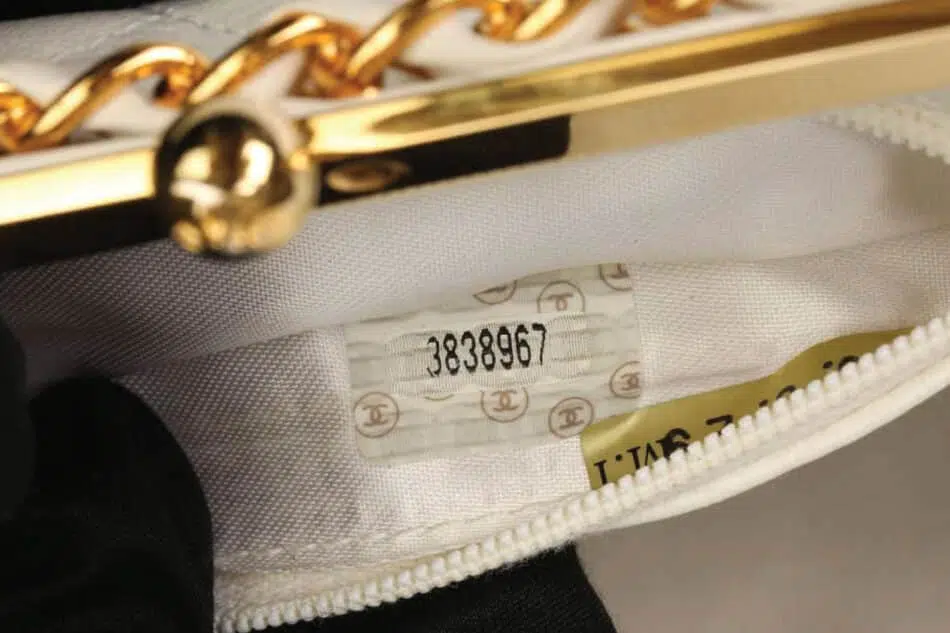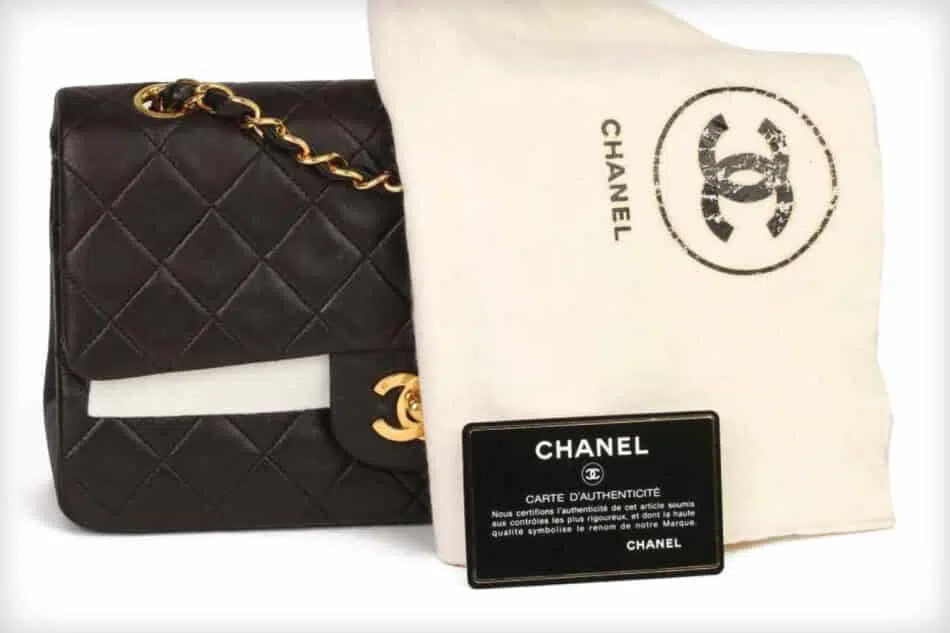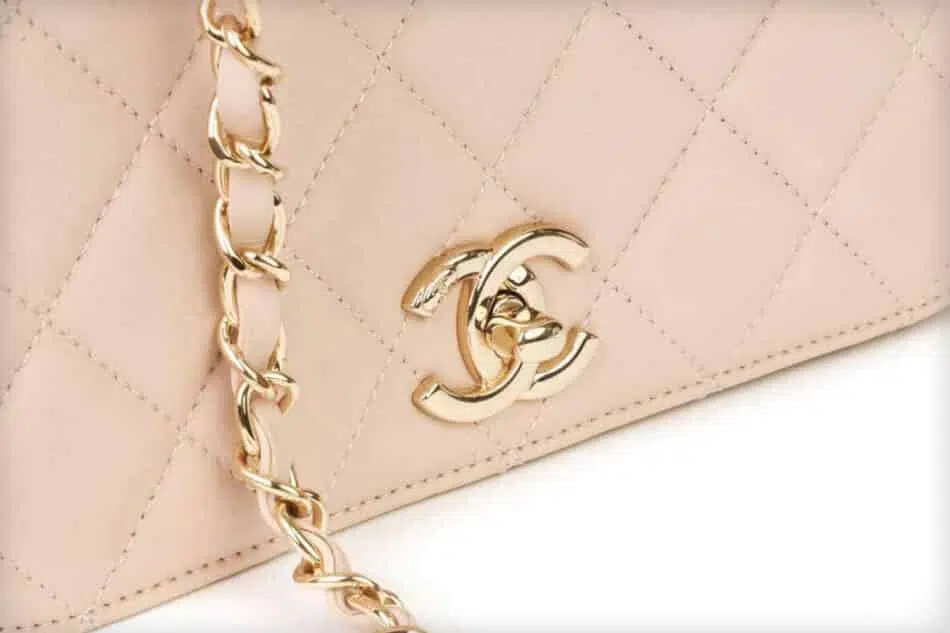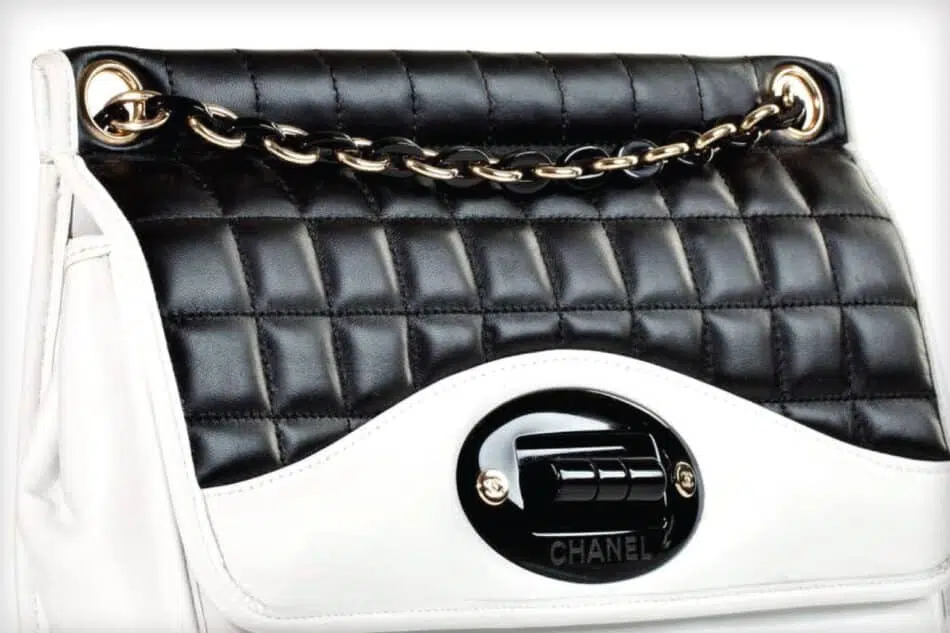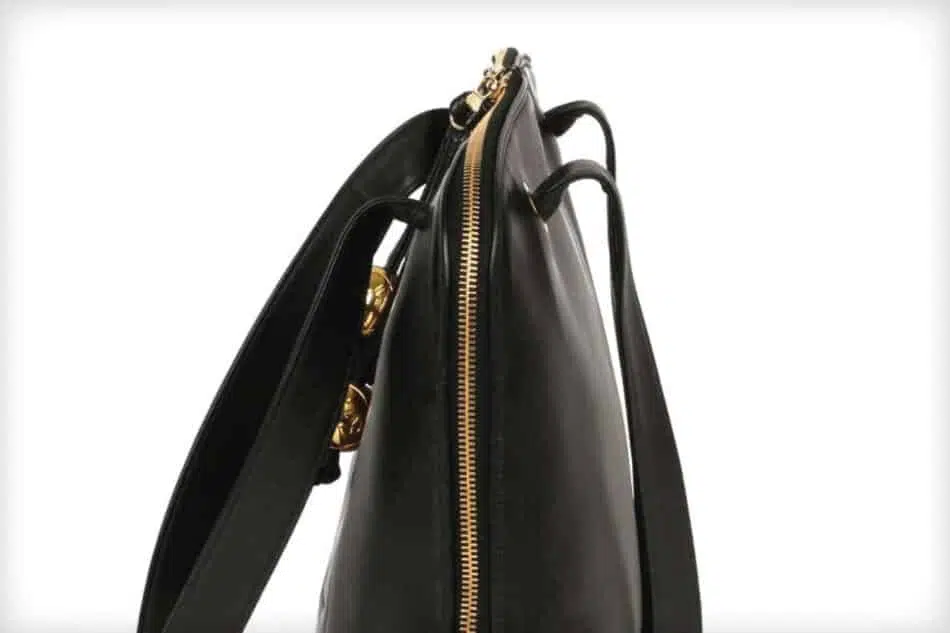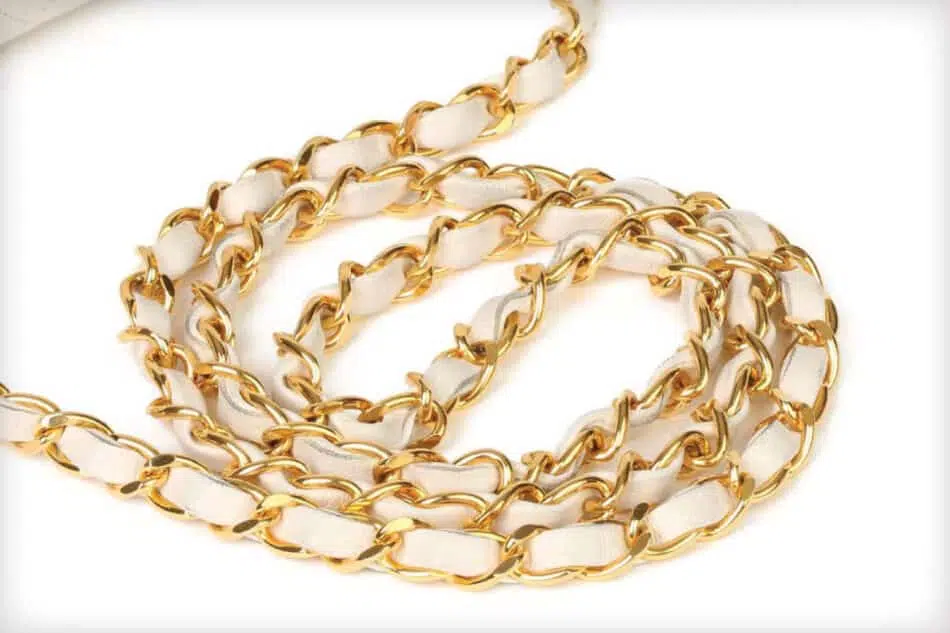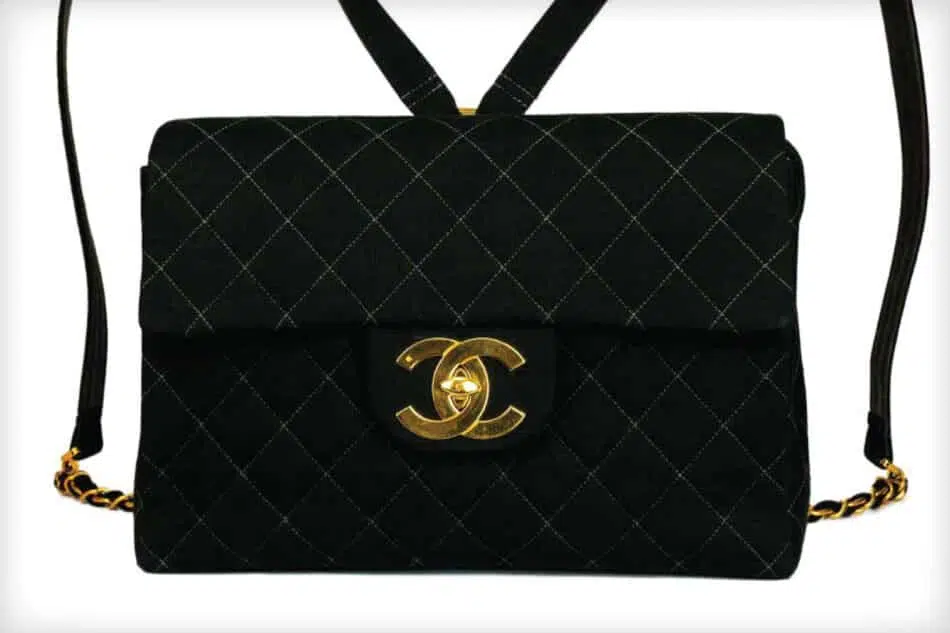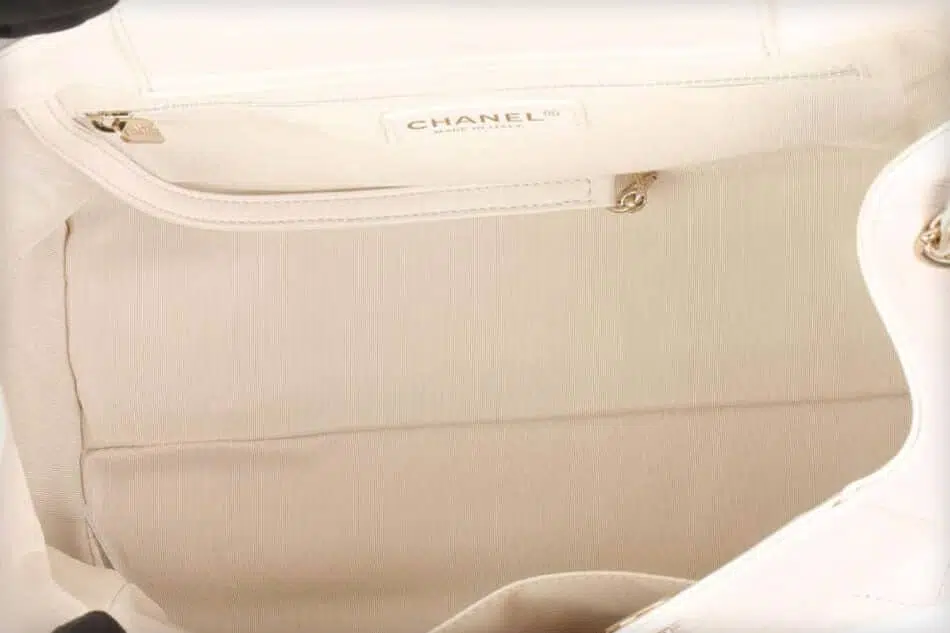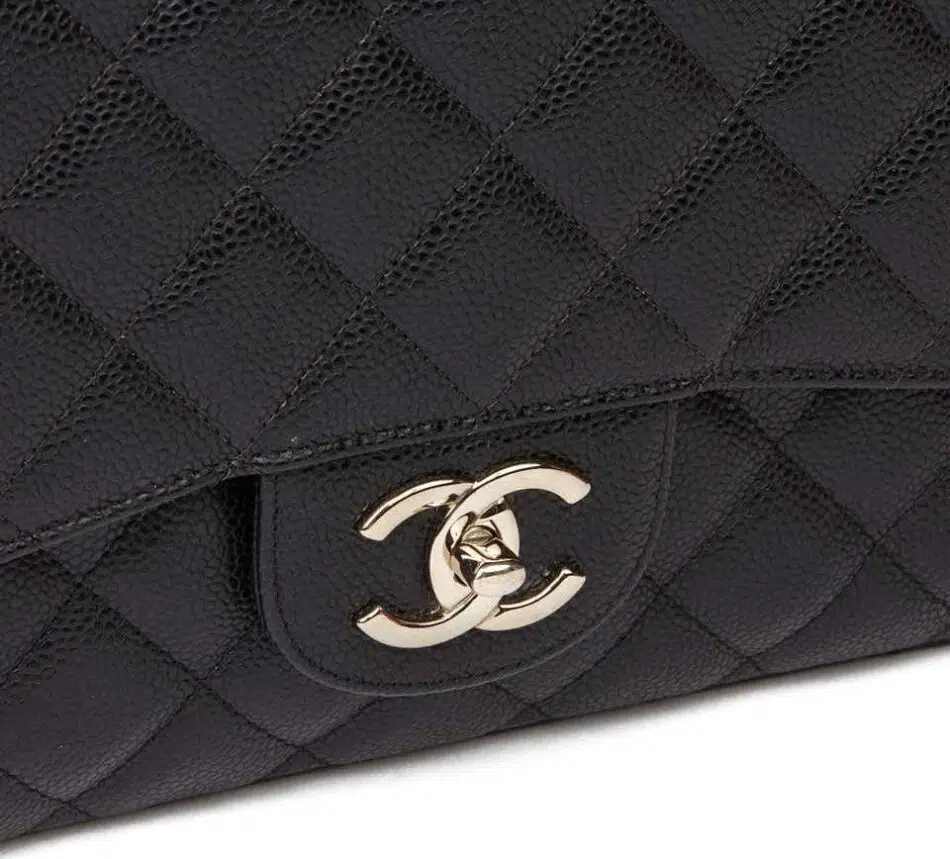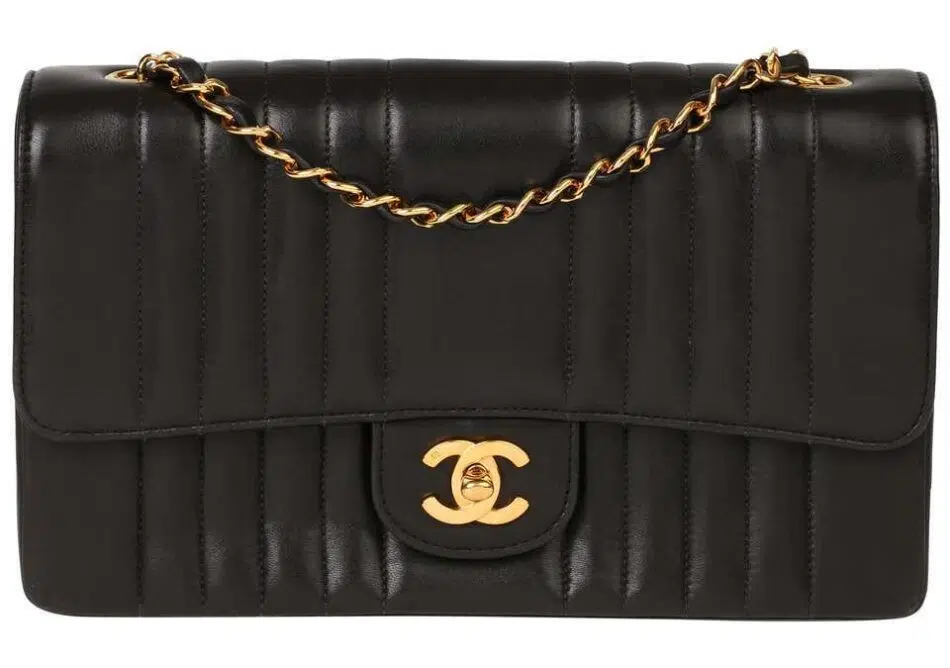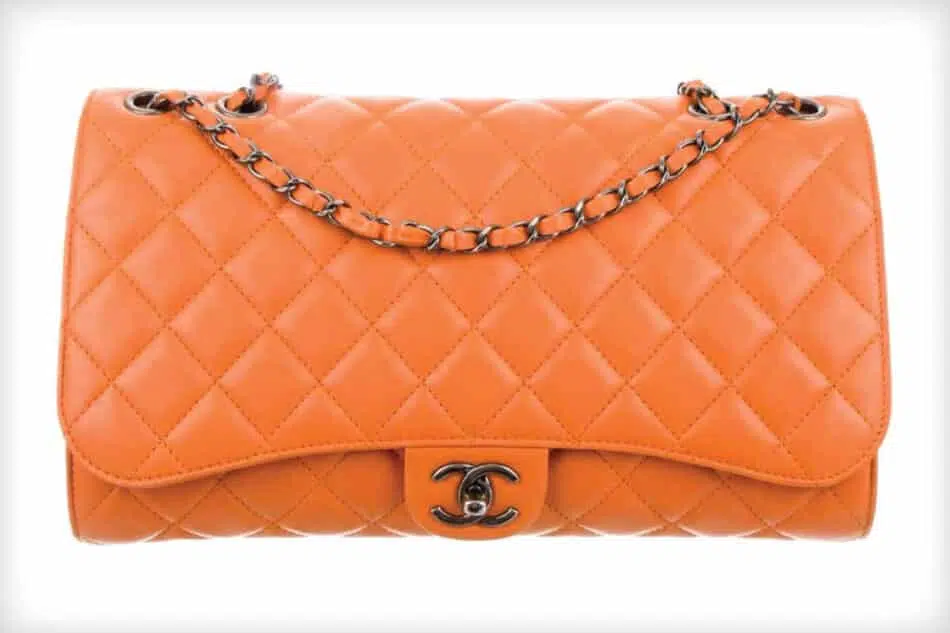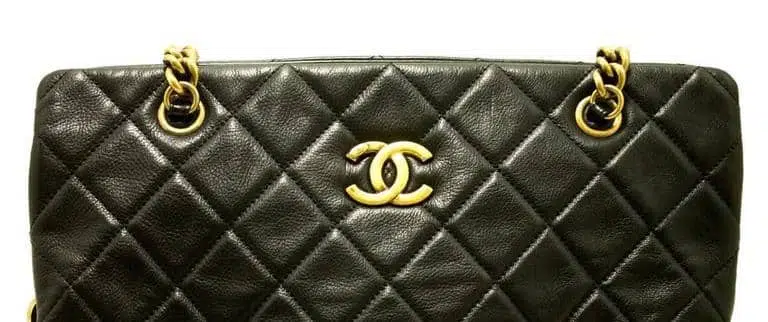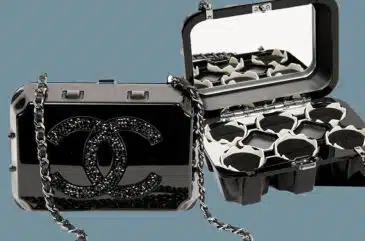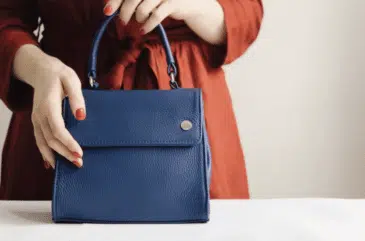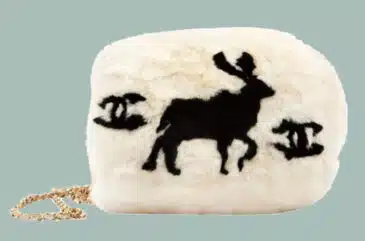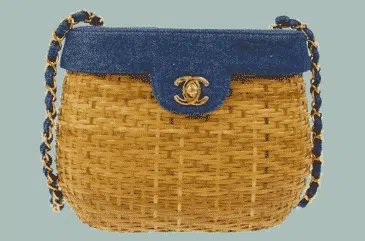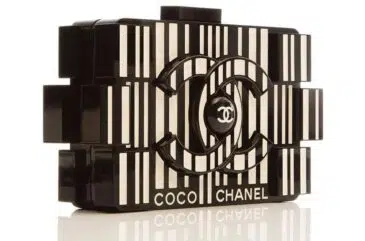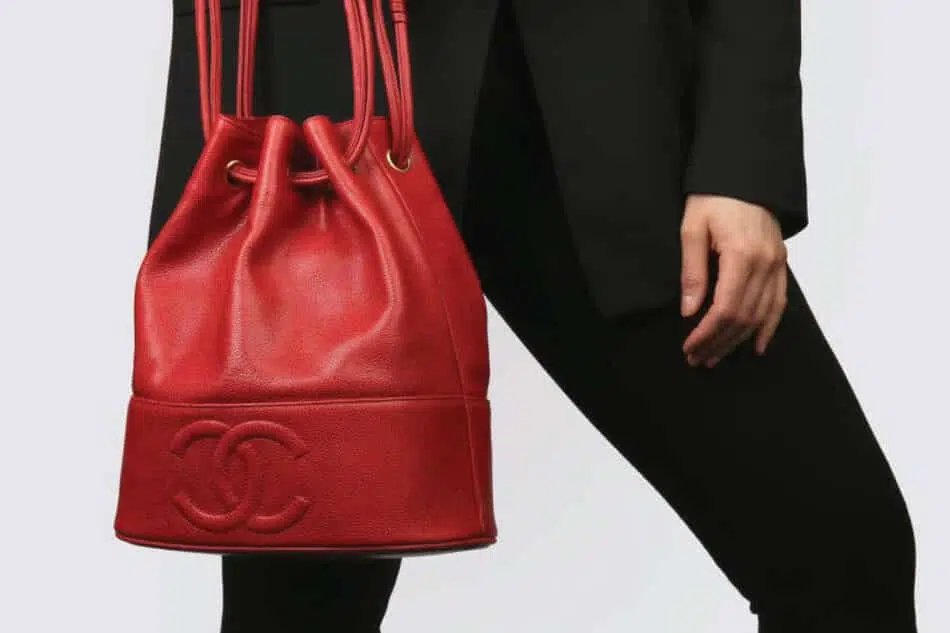
Chanel has created some of the most iconic handbags in the world of fashion. Crafted from top-quality materials, these chic purses are coveted not only for their timelessness but also for their high resale value.
No wonder that, just like Gucci, Louis Vuitton and other luxury brands, the French fashion house has had to fight counterfeiters who manufacture and sell fake bags under its name.
“When we hear people say, ‘It’s a gift,’ it’s a cue to tread carefully,” says Alexa Ridolfi, of A Second Chance Couture.” These days, provenance is as essential for Chanel bags as it is for a Chagall painting.
After all, like art, these fashionable accessories have recently experienced a stratospheric rise in value. Between 2010 and 2021, the price of a Chanel medium Classic flap bag increased by 140 percent. More desire and more profit has led to more — and better — counterfeits.
With forgeries improving, how do you spot a fake Chanel bag? “No one’s going to give you a crash course in authenticating,” says Gerry Gallagher, master craftsman at the Leather Surgeons.
An expert in leather bags, Gallagher explains that, although authenticating a Chanel is not an exact science, there are “some key things to look at. If any of these things jump out at you, you take a pass. It’s not worth the aggravation.”
Here are some of those key items to help you identify a real Chanel bag.
1. Serial Number
Chanel began including serial numbers at the bottom of its bags in the mid-1980s. Between six and eight digits long, depending on date of release, they indicate the bag style and year of manufacture, and their formatting has changed regularly over the years. These facts together mean that “a savvy consumer can lift quite a lot of information from” the serial number, says Gallagher.
First, the number in the bag should match the one on the accompanying Chanel authenticity card. If it doesn’t, that’s a red flag.
Next, the number should correlate with the year that the particular style was released. A quick web search will provide detailed information about Chanel serial numbers, as well as the release dates of various styles. Walk away if you find that, for example, your serial number indicates a 2005 manufacture date for a style that wasn’t made until 2013.
“A lot of people think that if you have a hologram sticker and an authenticity card, then it’s fine,” Ridolfi says, referring to the clear sticker with a hologram that Chanel began placing over the serial number around 2000. “But that’s not the case. Some of the worst fakes I’ve seen have had hologram stickers and authenticity cards. That’s the first thing they’ll knock off.”
2. Authenticity Card
If the Chanel authenticity card looks off, chances are the bag it accompanies is a fake. There are several ways to check if the card is genuine:
- First, make sure its serial number matches the one at the bottom of the handbag.
- Then, look closely to see if the text printed on it is perfectly aligned.
- Finally, examine the card’s quality. It should feel roughly like a credit card, and there should be no hologram effect when you tilt it back and forth.
3. CC Logo Clasp
A brand doesn’t reach Chanel’s heights without strict standards that apply to every detail of every bag — including the interlocking CC logo clasp. Designed in the 1980s by artistic director Karl Lagerfeld, the new clasp became a common and immediately recognizable feature of Chanel flap bags.
In a genuine Chanel clasp, the interlocking CCs have flat edges, not rounded ones. The right-hand C will always overlap the one on the left at the top, with the overlapping reversed at the bottom. Any other arrangement is an error, and when it comes to quality, Chanel doesn’t make those kinds of mistakes.
While the classic gold tone might come to mind as the most iconic color of the CC clasp, the range of colors and finishes of CC clasps on Chanel bags is extensive and varies depending on the style, collection, or special edition a bag is part of.
Gold clasps: Chanel handbags like the Chanel Classic Flap Handbag are finished with the classic shiny gold clasps. Others, like the Paris-Cuba Chanel Boy Bag, have gold clasps with a distinct aged effect, while other handbags from Chanel collections feature pale, brushed or matte gold variations with a softer sheen.
Silver clasps: A CC clasp in shiny silver tops the Chanel Caviar Pink Timeless Classic Flap Bag. Ruthenium adds an aged look to the clasp on a Chanel Boy Medium Black Leather Bag.
Embellished clasps: From interlaced leather weaves on the CC clasp of the Chanel Phone Holder Crossbody Bag to the enamel-filled CC design of the Chanel Trendy CC Top Handle Bag, Chanel’s CC clasp designs surprise and stand out in unexpected variations.
When checking the CC logo clasp, keep in mind that vintage Chanel bags and those crafted before 2008 have a richer gold tone than the ones on more recent handbag styles. This isn’t an authenticity concern — rather, it’s because these CC clasps were made from 24-karat gold-plated hardware and authenticated with a small hallmark engraved into the upper tip of the left C.
4. Screws
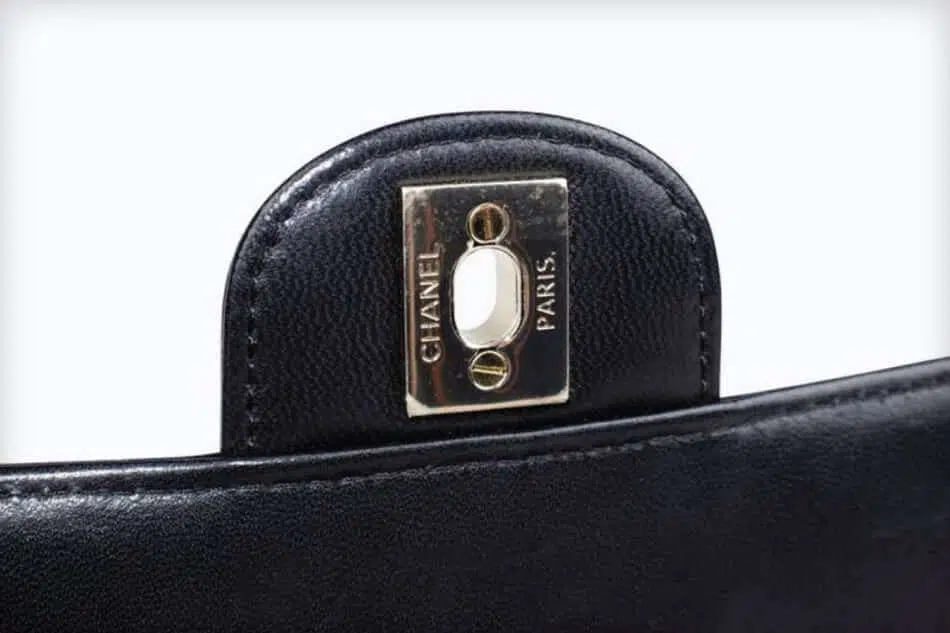
All eyes on the backplate — this hidden part of hardware is a key indicator of Chanel authenticity. From the Vintage Diana Flap Bag to the Boy Bag and Classic Double Flap Bag styles, every Chanel flap bag with a CC logo clasp has one, and it provides multiple indicators that can help confirm the authenticity of a Chanel bag — or uncover a fake.
Located on the inside of the flap, the backplate of the CC logo clasp is secured with two screws — and not just any kind of screws. Until 2015, Chanel only used flathead screws but never cross-shaped Phillips screws. That year, it switched to star-shaped, proprietary screws made exclusively for the House of Chanel. These screws are easy to recognize and hard to fake, because they require a special screwdriver that isn’t sold in a hardware store.
The backplate bears another indicator of an authentic Chanel bag: The all-caps lettering etched into the backplate will read “CHANEL” at the top and “PARIS” at the bottom of the plate. If the etching is irregular, the spacing uneven or the unmistakable typeface replaced by a mainstream font, it’s a sign of a fake.
5. Grommets
Grommets are the metal rings that a bag’s chain strap runs through. “There’s a kick-press machine with a very specific die that sets those grommets, and when they’re set by Chanel, they’re set flawlessly,” Gallagher says.
“The metal is turned back into the leather,” and the back of the grommet rolls back symmetrically and cleanly. “If you rub your hand across it,” he continues, “you shouldn’t feel any edge or ridge. The people who are making fakes, even some of the best fakes, haven’t figured out how to really get it right.”
6. Zippers
Chanel has used Lampo metal-tooth zippers for the past two decades, says Gallagher, who vehemently denies online reports that restorers always replace these with cheaper YKK zippers. “Ridiculous,” he huffs, clearly offended by the slight to his profession — and the misleading information.
Lampo zippers are expensive, but they are the only acceptable option for serious restorers. Who might not pay full price? A counterfeiter who thinks he can get away with it.
Look for the Lampo logo on the back of the zipper slider.
7. Leather Interlaced through the Chain Strap
In the 1980s, in his quest to reinvigorate the staid Chanel brand, Lagerfeld began interlacing leather through the chain strap. Today, Gallagher says, “there are four different ways that Chanel makes stripping for handbags.” Counterfeiters often get it wrong, or their efforts may look lumpy and unprofessional.
Here are the techniques used for Chanel leather straps:
Triple-fold: Specific to Chanel, this technique is used for the leather straps in about 90 percent of the house’s medium Classic flap bags. The process, as Gallagher describes it, is to “take a strip of leather and fold it once and then fold it back again. There’s no stitch.” The real deal, he adds, will have “a rolled edge on one side and a cut edge on the other side.”
Four-fold with a stitch: This is often used for exotic-skin medium Classics, vintage Chanel Camera bags and maxis and jumbos. In this technique, Gallager explains, you “take a strip of leather, fold the two edges until they meet in the middle. Then you fold it one more time.”
Turn (or fold) to center: For this, says Gallagher, you “take a strip of leather, fold the two edges until they meet and then hammer it down, so you see a line down one side of the leather and the two edges are folded.”
Cut edge: This technique, like the turn to center, is used for wallets on chains. Here, Gallagher explains, “two pieces of leather are cemented together and both edges are cut, so it’s raw edge on both sides.”
If the strap doesn’t match one of the above descriptions, it may be a fake.
8. Duster Bag
Authentic Chanel bags come in a duster bag, whose quality can help indicate if the purse inside is genuine or not. True Chanel duster bags have the Chanel logo printed in the center in white.
Something is wrong if the letters are off-center or if the bag feels cheap. Study the font used for proper logos to make sure you can identify a forgery.
9. Quilting and Stitching
The quilting pattern on a genuine Chanel bag is consistent on all sides of the bag and perfectly aligned, even when there’s a pocket or flap. Chanel bags come in several quilting patterns, such as diamond, chevron or square — all made with premium quality materials including calfskin, lambskin, patent leather and wool.
On an authentic Chanel bag, the stitching is clean and tight with a high stitch count per inch. Sloppy handiwork, loose threads, uneven stitching and misaligned quilting lines generally indicate a poorly made counterfeit.
The number of stitches per diamond in a Chanel bag’s diamond quilting pattern can vary, depending on the size, design and age of the bag. Smaller and vintage designs may have as few as eight stitches, while larger bags, like the Chanel Vintage Black Maxi Classic Flap Bag, will have more.
10. Lining
A burgundy interior is common for Chanel, but other linings are used as well, depending on the bag. Whatever the style or color, the lining should lie tight and flat against the interior.
A fake Chanel bag may have a cheap lining that creases or appears lumpy.
11. Stamping
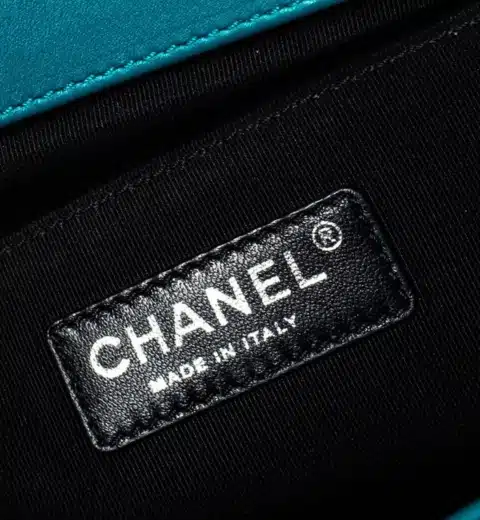
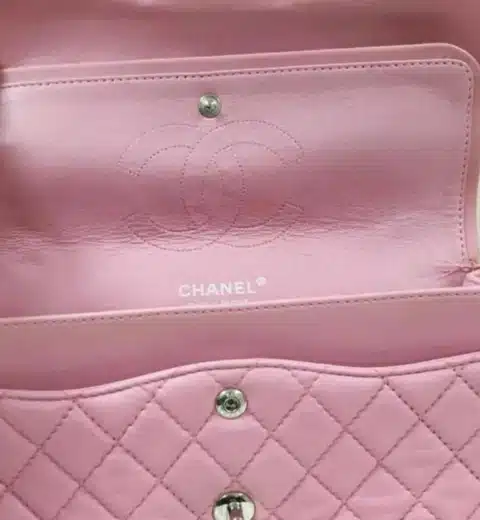
Another way to distinguish a real Chanel bag from a fake is by looking at the brand stamp. On the inside of every Chanel bag, a brand stamp is embossed either on the lining or on a leather patch sewn into the lining. The exact location of the stamp varies, depending on the style of the bag.
To ensure the stamp is authentic, here’s what to check for:
Clarity and legibility: The Chanel logo is printed in all capital letters with a small registered trademark sign behind it. The logo is accompanied by either “Made in Italy” or “Made in France” — never by “Paris,” which is used on the backplate. The stamp should always be crisp and legible.
Even spacing: All lettering should be clean and evenly spaced. If the stamp isn’t embossed, or it simply sits on top of the leather or specifies a city rather than the country it was manufactured in, the bag is probably a counterfeit.
Consistent color: The brand stamp always has the same color as the bag’s hardware. If the bag’s clasp, back plate and chain strap are gold-toned, the stamp should also be gold. If a Chanel handbag has silver hardware, the brand stamp should be silver.
12. Leather Quality
Chanel uses lambskin or calfskin for its leather bags. Both materials should have a high-quality look and feel.
They should also pass the sniff test. “Sometimes, the fakes from China can have a smell,” Ridolfi says, “like cheap leather.” Cleaning-product and other chemical odors are also negative signs.
A musty scent may indicate a fake that has been stored in bad conditions.
13. Shape and Structure
Although their shapes vary, genuine Chanel bags are thick and sturdy enough to stand on their own.
Study your desired bag to get a feel for its overall look and structure.
14. Consider the Whole
When shopping for a Chanel bag online, be wary of sellers with too much inventory of the same type. Educate yourself to recognize the real logo (and poor copies).
Lastly, familiarize yourself with the brand. Because Chanel releases so many designs, some of the “rules” may not apply to the bag you’re considering.
“Every year, they change something, so you have to stay on top of that,” says Ridolfi. “You’re looking at everything together. There could always be an exception. You can’t apply one rule to everything and say, ‘Because it doesn’t fit in this category, it’s not real.’ ”
Here, we’ve focused on details that generally don’t change. One absolute constant is that a true Chanel will never be cheap or slapdash. “The quality and precision are basically in everything,” says Ridolfi — in the thread, the hardware and, of course, the leather.
If you are concerned a potential purchase is a fake, use these tips to inspect it. However, the best way to avoid counterfeits is to buy from reputable sellers.
